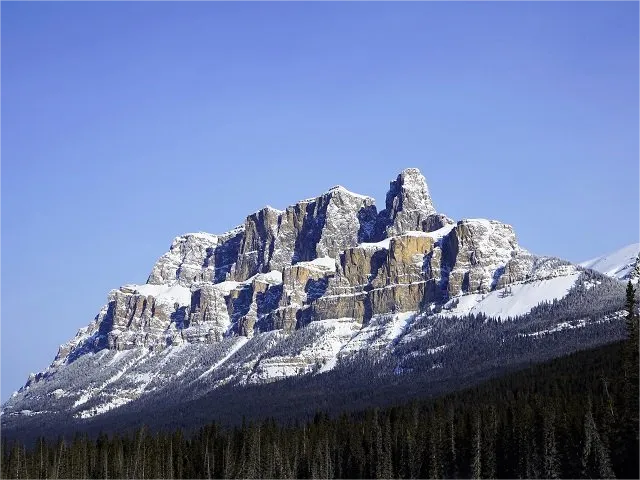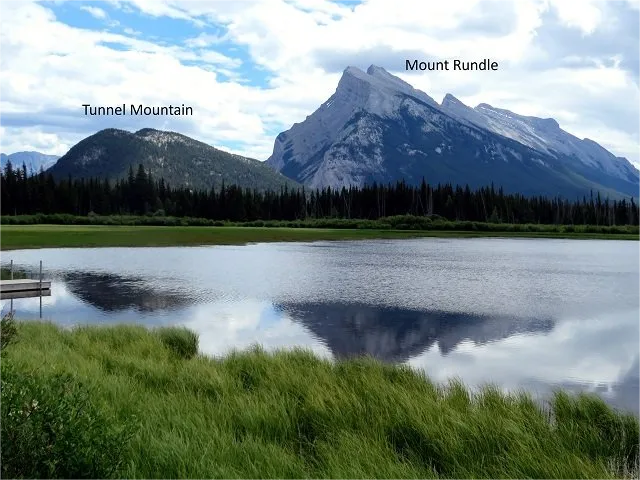Alberta Mountains – Wonderful to Weird Names
- by Mohamed Adam

When driving through the mountains on our way to the ski hill or hiking trail, I never tire from the awesome beauty of the Alberta mountains. What has always intrigued me is the variety of mountain names. Where did they come from? What is their meaning or tribute?
There are over 1000 named Alberta mountains and many more named peaks as part of some of larger mountains. The majority of the officially accepted names were given between 1880 and 1920 during the exploration of the mountains followed by the surge of alpinists into western Canada.
The types of names and origins of these names vary greatly.
It should be noted that many of these mountains have traditional names through the various First Nations peoples who lived in this amazing region. Most of the First Nations’ mountain names were ignored for the ‘new’ names, but not all.
Alberta Mountains – Name Categories
There are many ways one could categorize the names of the mountains. For instance, many of the Alberta mountains were named soon after World War I, so tributes to military personalities, events, places, and things were given through naming of mountains. Such as the 22 mountains named after British battleships active in World War I. Some have pretty cool names including Mount Invincible, Mount Sparrowhawk and Mount Shark. Others are not so cool such as Mount Indefatigable (say that ten times quickly).
Certain mountains were named after British Royalty, politicians, prominent folks, guides, explorers, climbers, and even relatives.
Other mountains were named for characteristics they have, such as their shape, colour, or a unique feature.
Mountains were also named for wildlife, vegetation, weather experienced, or views taken in.
The categories I have chosen to highlight are, ‘Shape Descriptors’, ‘Vague Descriptors’, ‘Weather Inspired’, and my favourite “Its Called What?” category.
The mountains described below are only a sampling of many more that would fit into each category.
Alberta Mountains Shape Descriptors
This category relates to the naming of a mountain based on its shape.
Castle Mountain (elevation 2,766m or 9,075 ft). Traditional Blackfoot name – Miistukskoowa
Located midway between Banff and Lake Louise sits this magnificent mountain that truly has the appearance of a massive castle.

In 1946, following World War II, Castle Mountain was temporarily changed to Mount Eisenhower in honour of General Dwight D. Eisenhower. The mountain’s name was changed back to Castle Mountain in 1979 after much public pressure. The highest point on the mountain was named Eisenhower Peak to keep the general’s tribute alive.
Heart Mountain (elevation 2,135m or 7,005 ft)
Heart Mountain was named in 1957 and the name says it all. The unique folding and faulting of this mountain formed an amazing heart shape at the summit.

Heart Mountain offers a challenging and rewarding hike/scramble. It definitely gets your heart pumping, both from exertion and from the views at the top.
The Three Sisters (elevation 2,940 m or 9,646 ft) Traditional Stoney Nakoda name – Ĩ-ktomnĩ
The name of “The Three Nuns” was given sometime in the winter months of 1883 when the three peaks that make up this mountain were blanketed in snow, appearing like nuns’ habits.

Soon after, in 1886, the name was changed to “The Three Sisters”.
The three peaks were also referred to as three sisters through a traditional Stoney Nakoda story of Ĩ-ktomnĩ , the old trickster who would promise the three sisters marriage when he was in trouble.
Big Beehive
This small mountain, which is located near Lake Louise truly resembles a beehive with is rounded shape and textured surface. An easy hike from the Chateau Lake Louise.

Turtle Mountain (elevation 2,210 m or 7,251 ft) Traditional Blackfoot name’s translation – The Mountain That Moves
The original shape of this mountain inspired the name of Turtle Mountain due to the rounded shape of the mountain similar to a turtle shell.
The shape of the mountain changed dramatically in 1903 when 30 million cubic metres of rock broke off the mountain, raced down the slopes, and buried a portion of the coal mining town of Frank. This catastrophe is known as the Frank Slide. Between 70 to 90 people lost their lives with only 12 bodies being recovered.
Alberta Mountains Vague Descriptors
There are so many mountains in Alberta so you would think some thought would go into giving each mountain a specifically unique name if possible. In this category the descriptive names given are somewhat vague.
Massive Mountain (elevation 2,435m or 7,989 ft)
This mountain was named in 1918 after the Massive Range that the mountain is part of. Ironically Massive Mountain is by far the smallest mountain in this range.
The tallest three are each over 2,900 m (9,500 ft) in elevation, while Massive Mountain measures in at a mere 2,435 m (7,889 ft). Perhaps someone felt sorry for this runt of the mountain litter. Sort of like when we named our Bichon Shih Tzu puppy ‘Bruiser’.
Wonder Peak (elevation 2852m or 9,357 ft)
The mountain was named in 1913 as it inspired wonder. Personally, all mountains give me that impression.
Fairview Mountain (elevation 2,744m or 9,003 ft)
This mountain was named in 1894 for its view from the top, which overlooks Lake Louise and beyond.

Now this seems to be a rather muted name for the spectacular view one gets at the ridge top. I’ve seen the view from the top of the ridge and in my opinion I would have given it a more awe inspiring label.
Today, describing something as fair suggests it is okay, or so-so. I presume the name had a slightly more robust meaning in 1894!
Observation Peak (elevation 3,174m or 10,413 ft)
This mountain was named in 1898 by a climber who found it to have the best viewpoint he had ever climbed. Again, a slightly under-rated name in my opinion. If the view was that great you would think a more awe inspiring name would be in order.
Utopia Mountain (elevation 2,602m or 8,537ft)
A climber named the peak in 1916 when he could look down from the top at his comfortable base camp. As a balance to the previous two muted mountain names, this name seems somewhat of an overkill. Was his comfortable camp really like Utopia? Wow! I wonder wear he got his gear.
Alberta Mountains Weather Inspired
In general, I imagine weather related mountain names are given for the weather related events the climbers or explorers at that particular time.
Storm Mountain
There are actually two mountains with the same Storm Mountain name. Storm Mountain (Banff National Park) and Storm Mountain (Kananaskis Country).

Both mountains were named in 1884 by the same explorer, George Mercer Dawson. In both cases George experienced inclement weather on his visit.

I think George lacked a bit of imagination when it came to naming mountains. The mountains are about 100 kilometres (60 miles) apart, so perhaps he thought no one would catch on to the duplication of mountain names.
Perhaps if George had experienced nice weather at one of these mountains we would have two different names.
Wind Mountain
Perhaps it was an uninspiring day for Eugene Bourgeau when he named this mountain in 1858. He noticed the clouds were curling around at the peak. Again, what would the mountain’s name be today if it were a calm sunny day in 1858?
Two other mountains were named Tornado Mountain and Cyclone Mountain respectively. Both names indicate weather events that technically do not occur in these mountainous locations. In both cases the climbers who named these mountains were describing the severity of the weather they faced. No doubt to them, the high winds they encountered felt like a hurricane or tornado.
Alberta Mountains “It’s called what?”
Certain Alberta Rocky Mountains ended up with names that caused some head scratching.
Tunnel Mountain
Tunnel Mountain, which borders the town of Banff, got its name during the building of the railroad in the 1880’s. A rather weary team of surveyors assumed the easiest rail path would be to follow the Bow River. They then realized multiple river crossings and cliffs would cause major headaches. They proposed instead, to drill 275 metre (900 ft) tunnel through the small mountain.

When driving through the mountains on our way to the ski hill or hiking trail, I never tire from the awesome beauty of the Alberta mountains. What has always intrigued me is the variety of mountain names. Where did they come from? What is their meaning or tribute? There are over 1000 named Alberta mountains…




